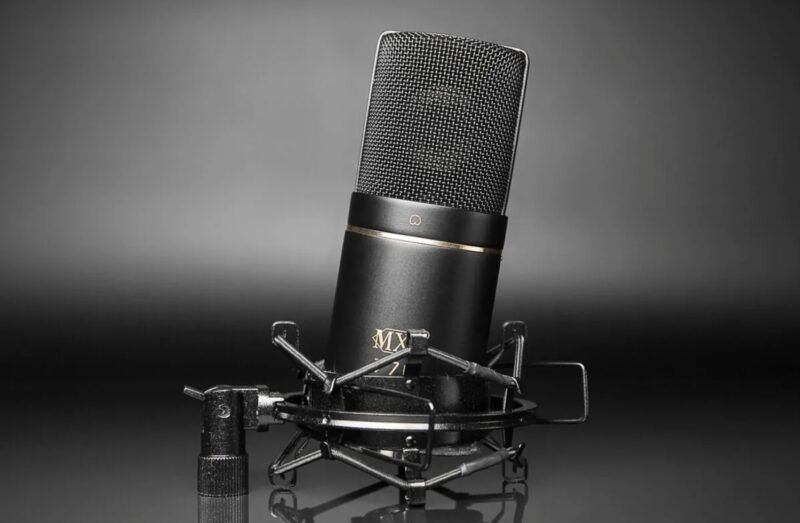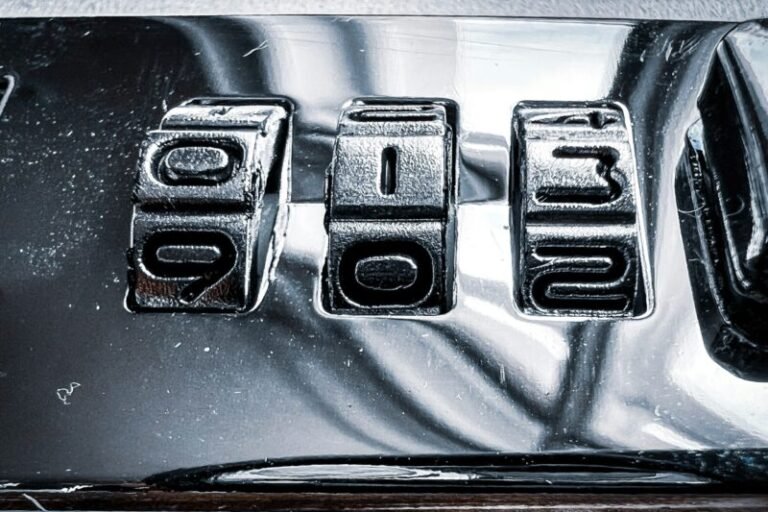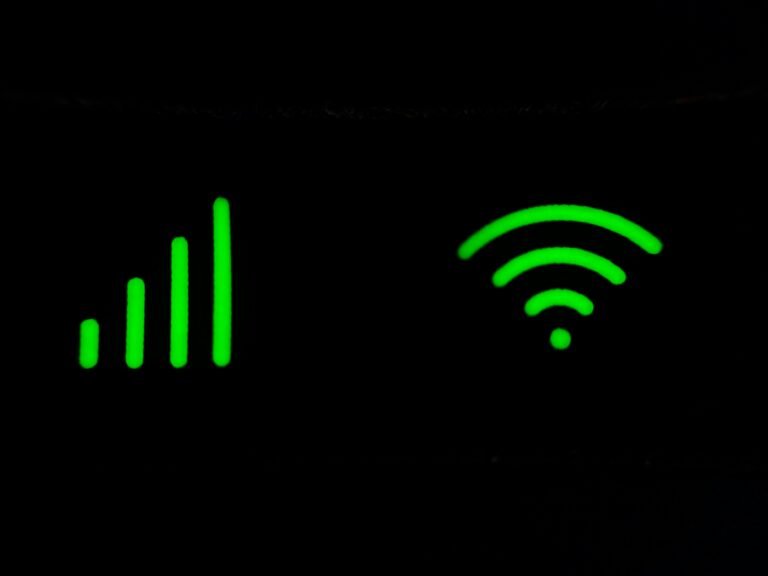Whether you’re just starting out on Twitch, YouTube, or podcasting, having clear and crisp audio is essential. Fortunately, in 2025 you don’t need to break the bank to sound professional. With the rise of high-quality, budget-friendly USB microphones, it’s now easier than ever to sound great on a budget. In this beginner-friendly guide, we’ll walk you through the best streaming microphones for under $100, including what to look for and why these mics are perfect for content creators in 2025.
Find the Perfect Budget Streaming Mic for Your Setup
Whether you’re just starting out on Twitch, YouTube, or podcasting, having clear and crisp audio is essential. Fortunately, in 2025 you don’t need to break the bank to sound professional. With the rise of high-quality, budget-friendly USB microphones, it’s now easier than ever to sound great on a budget. In this beginner-friendly guide, we’ll walk you through the best streaming microphones for under $100, including what to look for and why these mics are perfect for content creators in 2025.
Why Audio Quality Matters
Your voice is your brand. Bad audio quality turns viewers away, no matter how good your video looks. A good mic helps eliminate background noise, reduce echo, and enhance your voice’s clarity and warmth. Especially when live streaming or recording in real-time, poor audio can ruin the viewer experience. A budget streaming mic 2025 might not have all the bells and whistles of premium studio gear, but many now offer exceptional clarity, simple plug-and-play operation, and robust build quality—making them an ideal starting point.
What to Look for in a Budget Streaming Mic
What Is a Microphone’s Polar Pattern?
A microphone’s polar pattern describes the direction from which it captures sound. The most common type is the cardioid pattern, which picks up audio mainly from the front while rejecting sound from the sides and rear. This makes cardioid mics ideal for voice streaming, podcasting, and vocals because they help block out unwanted ambient noise.
Other patterns include:
- Omnidirectional: – picks up sound equally from all directions.
- Shock Mount: Minimizes vibrations
- Bidirectional: Frees up desk space– captures from the front and back, but not the sides.
- Supercardioid/Hypercardioid: – tighter front focus, with a slight rear pickup.
Understanding a mic’s polar pattern helps you choose the best one for your recording environment and style.
Noise Rejection vs. Noise Canceling: What’s the Difference?
Noise rejection refers to a microphone’s natural ability to block out background noise using its polar pattern (like cardioid). It focuses on picking up sound from specific directions—usually the front—while rejecting sound from the sides and back. Noise canceling, on the other hand, uses electronic processing (often found in headphones or some mics) to actively cancel out ambient noise through inverted sound waves. While helpful in certain conditions, noise canceling can sometimes introduce unwanted digital artifacts. Which is better? For streaming, podcasting, or voiceover work in a typical room, noise rejection from a cardioid or dynamic microphone is usually more natural and reliable. It doesn’t require extra software and won’t alter the tone of your voice.
Here are the key features to consider:
- Connection Type: USB is the most common for beginners. No audio interface needed.
- Polar Pattern: Cardioid is best for vocals, as it picks up sound from the front and rejects noise from the sides.
- Build Quality: Look for metal construction or sturdy plastic.
- Noise Rejection: Helps isolate your voice and reduce keyboard or room noise.
- Compatibility: Make sure it works with your operating system and recording software.
Quick Comparison: Best Streaming Microphones for Under $100
| Microphone | Connection Type | Price | Noise Rejection | Design Quality | Best Feature |
|---|---|---|---|---|---|
| FIFINE K688 | USB & XLR | $80 | Excellent | Solid metal body | Dual connectivity |
| JLab Talk GO | USB-C | $50 | Good | Sleek and minimal | Lightweight and affordable |
| Maono AU-PM421 Kit | USB | $70 | Moderate | Full setup bundle | Includes boom arm and pop filter |
| TONOR Q9 Kit | USB | $60 | Moderate | Streamlined package | Great all-in-one starter kit |
| Blue Snowball iCE | USB | $45 | Good | Spherical retro look | Plug-and-play simplicity |
FIFINE K688 USB/XLR Dynamic Microphone
Dynamic microphones like the K688 use a moving coil to capture sound, which makes them excellent at rejecting background noise. This is perfect for untreated rooms or noisy environments….
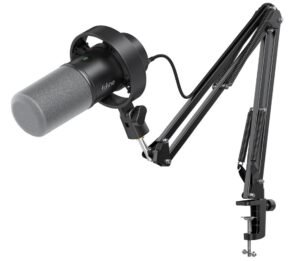
- Connector: USB & XLR
- Price: ~$80
- Noise Rejection: Excellent for its price (dynamic mic)
- What We Like: Great audio quality, dual connectivity, rugged build. Offers surprisingly professional sound for the price.
- What We Don’t Like: A bit bulky for some desk setups. No onboard headphone monitoring.
- Design Quality: Solid metal body, studio-style aesthetic. Feels premium and built to last.
- Why It’s Great: It punches well above its price, sounding closer to a $150+ mic. The dynamic capsule helps reduce background noise. It’s ideal for creators who want pro-level control with minimal post-editing. It punches well above its price, sounding closer to a $150+ mic. The dynamic capsule helps reduce background noise.
JLab Talk GO USB Microphone
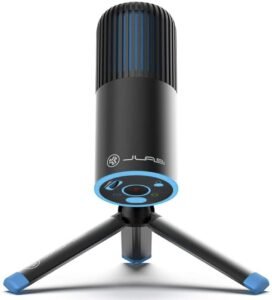
Noise rejection refers to a microphone’s ability to isolate your voice while minimizing surrounding sounds like fans, keyboard clicks, or echo. Cardioid patterns help with this…
- Connector: USB-C
- Price: ~$50
- Noise Rejection: Good
- What We Like: Ultra-lightweight, clean design, affordable. Easy to toss in a backpack and go.
- What We Don’t Like: Build feels plastic-y. Limited onboard controls.
- Design Quality: Modern look, portable, minimal. Sleek enough to fit seamlessly into any setup.
- Why It’s Great: For the price, the audio is clear and focused—great for those just getting into streaming or podcasting. Its compact size and ease of use make it perfect for beginners or mobile creators. For the price, the audio is clear and focused—great for those just getting into streaming or podcasting.
Maono AU-PM421 USB Condenser Mic Kit
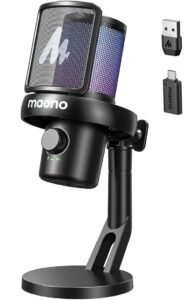
This condenser mic is more sensitive than dynamic mics, so it’s great for capturing detailed vocals. However, it may also pick up more ambient noise unless you’re in a quiet space…
- Connector: USB
- Price: ~$70
- Noise Rejection: Moderate
- What We Like: Comes with boom arm, pop filter, shock mount. Offers amazing value for a full setup.
- What We Don’t Like: Slight background noise in untreated rooms. USB-only connection may limit upgrade paths.
- Design Quality: Professional setup look, great starter bundle. All accessories match in quality and style.
- Why It’s Great: An all-in-one package for streamers on a tight budget. This kit is ideal for beginners who want to avoid piecing together individual accessories and just start recording right away. An all-in-one package for streamers on a tight budget.
TONOR Q9 USB Condenser Microphone Kit
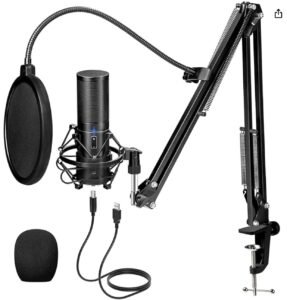
The Q9 is made with sturdy ABS plastic components and reinforced mesh for the mic grille, offering durability while keeping the price low…
- Connector: USB
- Price: ~$60
- Noise Rejection: Moderate
- What We Like: Excellent value, easy setup. No drivers needed; works out of the box.
- What We Don’t Like: Slightly bulky boom arm. May wobble with lighter desks.
- Design Quality: Clean, minimalistic. Includes all the essentials for streamers.
Why It’s Great: One of the best starter kits for vocal clarity and affordability. It’s a reliable pick for streamers and remote workers looking for solid audio quality without tech hassle. One of the best starter kits for vocal clarity and affordability.
Blue Snowball iCE
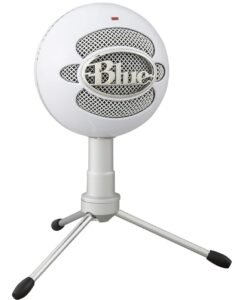
Cardioid mics like the Snowball iCE are designed to pick up sound from the front while blocking sound from the sides and rear. This helps focus the mic on your voice…
- Connector: USB
- Price: ~$45
- Noise Rejection: Good (cardioid)
- What We Like: Iconic design, reliable quality. Simple and recognized by countless creators.
- What We Don’t Like: No headphone jack or gain control. Limited functionality for growth.
- Design Quality: Sleek spherical shape, sturdy. Still one of the most visually distinctive USB mics.
- Why It’s Great: Trusted entry-level mic for creators, plug-and-play simplicity. A timeless pick for beginners who want decent sound without needing to learn complex setups. Trusted entry-level mic for creators, plug-and-play simplicity.
check price on amazon
Sound Test and Performance
We reviewed all five mics for typical streaming conditions: a desktop setup with ambient background noise, keyboard tapping, and no sound treatment. The FIFINE K688 came out on top in terms of clarity and noise isolation, followed by the Maono AU-PM421. While the Blue Snowball iCE lacked fine-tuning controls, its cardioid pattern held up well for general streaming needs.
Accessories That Improve Audio
Even with a good mic, you can take your sound to the next level with:
- Pop Filter: Reduces plosive sounds
- Shock Mount: Minimizes vibrations
- Boom Arm: Frees up desk space
- Foam Windscreen: Helps with noise rejection
- Most budget streaming mic kits include these, but if not, they’re worth adding.
Tips for Better Sound on a Budget
- Record in a quiet room with soft furnishings
- Speak close to the mic (about 6 inches away)
- Lower input gain to reduce background noise
- Use free software like Audacity to clean your audio
Final Thoughts
You don’t need a $500 setup to sound great. The options above prove you can get started with a budget streaming mic 2025 and still sound professional. Whether you’re launching a podcast, going live on Twitch, or uploading your first YouTube video, these mics offer fantastic value, simplicity, and performance for under $100. Choose based on your setup and workflow. Want plug-and-play simplicity? Try the JLab Talk GO. Need more control and hardware? Go with the FIFINE K688 or Maono kit

